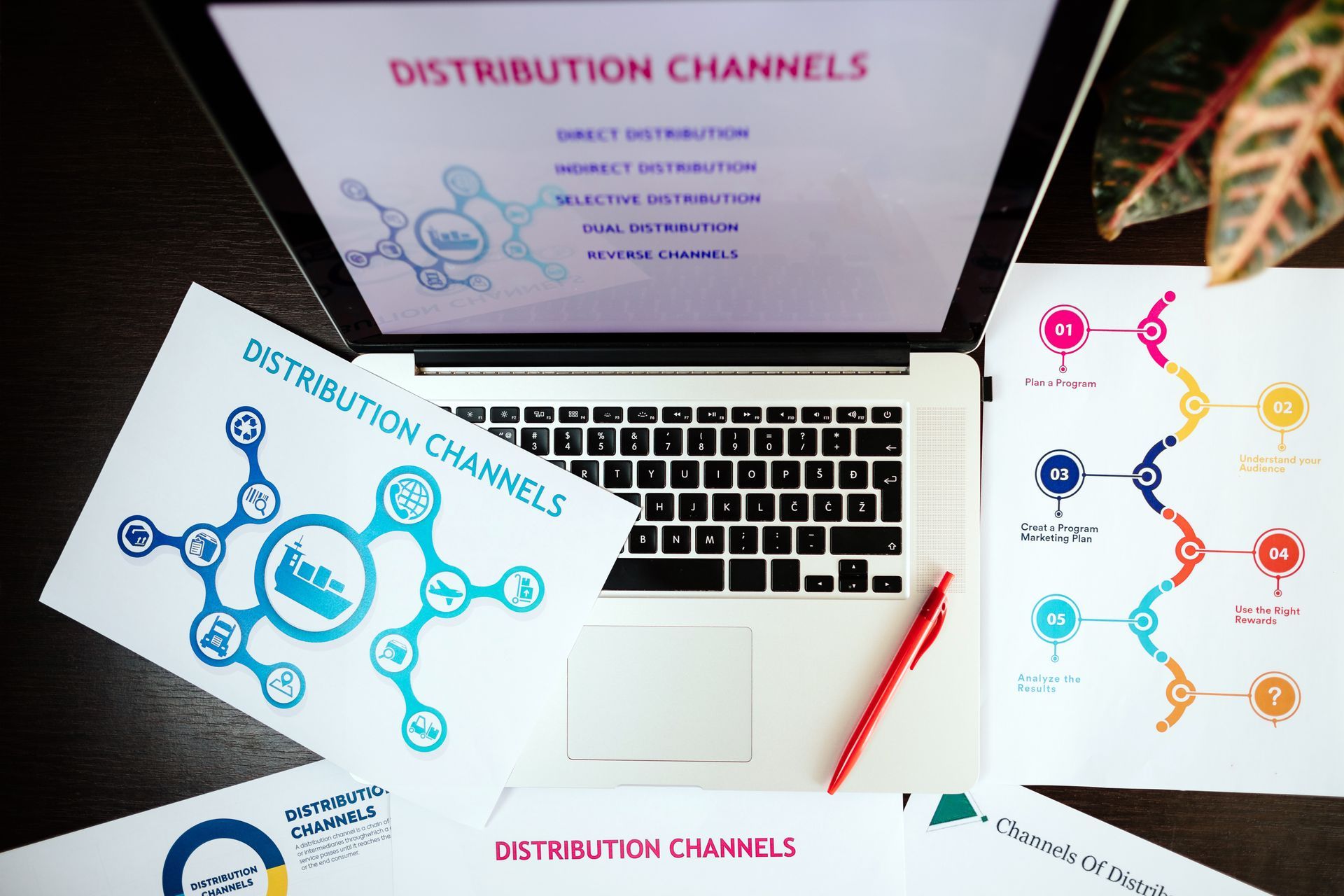Why Agentic AI Is Only as Smart as Your Customer Data

Did you know that organizations using high-quality customer data see a significant boost in AI-driven decision-making? At LayerFive, we know that Agentic AI works best with good data. Your data must be clean, contextual, and focused on identities to get the most out of Agentic AI.
We stress that combining customer data is key for AI insights. Our customer data platform is built to give you clean, contextual, and identity-driven data. This way, your AI agents can make smart choices.
Key Takeaways
- High-quality data is essential for effective Agentic AI.
- Combining customer data is vital for AI insights.
- Clean, contextual, and identity-driven data leads to smart AI decisions.
- LayerFive's customer data platform offers unified customer data.
- Quality data is needed to fully use Agentic AI.
The Rise of Agentic AI in Business
Agentic AI is changing businesses by making customer experiences more personal. It's important to know what Agentic AI is and how it's used today.
Defining Agentic AI and Its Capabilities
Agentic AI means artificial intelligence that acts on its own for users or businesses. These AI agents can decide, act, and learn from new info without humans. They can handle lots of data, learn from interactions, and get better over time.
How Businesses Are Leveraging AI Agents Today
Businesses are using Agentic AI in many ways to improve operations and customer service. It's making a big difference in marketing and customer service.
Marketing Use Cases
In marketing, Agentic AI helps make customer experiences more personal. It predicts what customers might want and automates marketing campaigns. For example, AI tools can use customer data to send ads and content that match what customers like.
Customer Service Applications
In customer service, AI agents help with questions, problems, and support 24/7. These AI chatbots and virtual assistants can understand and respond to natural language. This makes customers happier and saves businesses money.
Unified consumer data powers multiple industries by enhancing both marketing and customer service. In retail, it enables personalized product recommendations and targeted promotions, while improving order tracking and customer support.
In finance, businesses can deliver personalized product offers and risk assessments, alongside efficient account management and fraud detection. Similarly, in healthcare, unified data supports targeted health campaigns and patient engagement, while simplifying appointment scheduling and medical support services.
The Critical Relationship Between AI and Data Quality
Agentic AI's full power comes from clean, contextual, and identity-driven data. We've seen how Agentic AI is changing business. But, its success depends on the quality of the data it uses.
The saying "garbage in, garbage out" fits AI perfectly. Bad data leads to poor AI results. AI needs good data to learn, decide, and forecast.
Why "Garbage In, Garbage Out" Applies to AI
The "garbage in, garbage out" rule started in computer science. It means bad data leads to bad results. For AI, this is even more true because it uses lots of data.
Bad data messes up AI's learning. This can cause wrong decisions, bad predictions, and failed business goals.
The Amplification Effect: How Data Quality Impacts AI Outcomes
Data quality affects AI results a lot. Good data makes AI better, while bad data makes things worse. Here's how different data qualities impact AI:
High-quality data is critical for maximizing AI-driven marketing outcomes. Accuracy ensures more precise predictions and decisions, while completeness provides better coverage of customer behaviors and preferences.
Consistency enhances the reliability of AI-generated insights, and contextual relevance allows businesses to deliver more targeted and effective AI-driven actions.
Three Essential Data Qualities for Effective Agentic AI
Agentic AI needs high-quality data that is accurate, contextual, and identity-driven. As businesses use machine learning and data analytics more, good data is key. It's vital for making smart decisions.
Clean Data: Accuracy, Consistency, and Completeness
Clean data is the base for Agentic AI success. It must be accurate, consistent, and complete. Bad data can lead to wrong decisions and distrust in AI.
To get clean data, companies must check and clean their data well.
- Validate data against trusted sources
- Implement data normalization to ensure consistency
- Use data profiling to identify and correct errors
Contextual Data: Relevance and Relationships
Contextual data helps Agentic AI understand customers better. It shows how customers behave and what they like. This way, businesses can offer more personalized services.
Identity-Driven Data: The Foundation of Customer Understanding
Identity-driven data is key for knowing customers and giving them what they want. It links all customer interactions. This helps businesses understand their customers better and market more effectively.
Maintaining high-quality data is essential for effective marketing and decision-making. Clean data—which is accurate, consistent, and complete—ensures reliable insights and informed decisions.
Contextual data, enriched with meaningful relationships, enables personalized customer experiences and deeper understanding of behaviors. Identity-driven data, linked directly to individual customer identities, provides a comprehensive customer view, allowing businesses to execute highly targeted marketing campaigns.
The Identity Challenge in Modern Marketing
The modern marketing world has a big challenge: figuring out who customers are across different places. Customers touch base with brands in many ways, like on social media, through email, in stores, and over the phone. It's getting harder to see them as one person.
Fragmented Customer Journeys Across Channels
Customer paths are now broken into pieces across different devices and places. A person might see a product on social media, look it up on their phone, and buy it on a computer. It's key to link these steps to really get to know what customers do.
- Multiple device and browser usage
- Varied interaction channels (social, email, chat, etc.)
- Diverse data sources (CRM, analytics tools, etc.)
The Limitations of Cookie-Based Tracking
For a long time, cookies helped track what people did online. But now, they're facing big problems:
Privacy Regulations Impact
Laws like GDPR and CCPA have made it harder to use cookies. They need people to agree to use them first, which makes tracking less effective.
Browser Restrictions
More browsers are stopping or blocking third-party cookies. This makes cookie tracking even less reliable.
To beat these hurdles, marketers need new ways to know who their customers are. They should use their own data, set up strong data management systems, and use smart insights. This will help them get a clear and accurate view of their customers.
Customer Data Platforms: The Backbone of Agentic AI Success
A strong Customer Data Platform (CDP) is key to Agentic AI's success. It brings together customer data from all touchpoints. LayerFive knows how important CDPs are for Agentic AI to create personalized customer experiences.
Unified Customer Profiles as AI Fuel
Unified customer profiles are the base of effective Agentic AI. CDPs combine data from different sources, giving a full view of each customer. This helps AI agents make smart choices.
Real-Time Data Processing Capabilities
Being able to process data in real-time is vital for Agentic AI. It lets AI respond quickly to customer interactions. CDPs make this possible through:
- Event-Based Triggers: They catch and process events as they happen, making AI actions timely and relevant.
- Continuous Learning Systems: They update AI models with new data, keeping insights sharp and current.
Event-Based Triggers
Event-based triggers are key for catching customer interactions in real-time. They let AI agents quickly respond to customer actions, improving the experience.
Continuous Learning Systems
Continuous learning systems keep AI models current with the latest data. This ongoing learning is essential for keeping AI insights accurate and relevant.
Key Customer Data Platform (CDP) features significantly enhance the performance of Agentic AI. Unified customer profiles provide a comprehensive understanding of each customer, enabling smarter personalization.
Real-time data processing ensures businesses can respond instantly to customer interactions, improving engagement. Additionally, continuous learning keeps AI models accurate and updated, driving better insights and decision-making over time.
Data Silos: The Enemy of Intelligent AI Systems
In today's world, data silos are a big problem for AI systems. They make it hard for AI to work well. It's key to fix this problem to make AI successful.
Common Data Silos in Organizations
Data silos happen when different parts of a company keep their data separate. This makes it hard to use the data together. Examples include:
- Separate databases for customer service, sales, and marketing
- Different CRM systems across various business units
- Isolated analytics tools that don't share data
This creates a broken view of the customer. It makes it hard for AI to understand them fully.
The Cost of Disconnected Customer Data
Data silos hurt AI a lot. They make it hard for AI to:
Several challenges can negatively affect AI performance in marketing. An incomplete customer view leads to reduced accuracy in predictions and personalization. Inefficient data processing increases processing time and operational costs, slowing down insights. Additionally, a lack of contextual understanding results in poor decision-making, as AI models operate with limited context.
Breaking Down Silos with Integrated Platforms
Organizations are using integrated customer data platforms to solve this problem. These platforms bring together different data sources. This gives a complete view of the customer. By doing this, businesses can:
- Make AI insights more accurate and relevant
- Work more efficiently by streamlining data
- Give customers better and more personal experiences
At LayerFive, we know that combining customer data is more than just tech. It's about a strategy that fits your business goals. Our platform works with your current setup. It's secure and follows the rules for your AI projects. Using our solutions boosts your AI and protects against threats like prompt injection.
Fixing data silos and using integrated data strategies lets organizations get the most out of their AI. This leads to better decisions and growth.
First-Party Data: The Gold Standard for AI Training
In AI training, the quality of data is key. First-party data is the best. It's vital for businesses to understand its value for using customer data platforms and improving data management.
Why First-Party Data Outperforms Third-Party Sources
First-party data comes directly from customers. It's more accurate and relevant than third-party data. This data is also safer and follows privacy rules better.
Using first-party data helps businesses analyze customer behavior better. They can make marketing more targeted and effective.
Strategies for Expanding Your First-Party Data Collection
To get the most from first-party data, businesses need good strategies. Two main ways are:
Value Exchange Principles
Offering value to customers can make them share their data. This could be personalized content, special offers, or better services.
Progressive Profiling Techniques
Progressive profiling collects more data as customers interact more. It respects privacy and builds trust by being open about data use.
At LayerFive, we use privacy-first data practices and real-time analytics. This helps businesses get accurate insights. By focusing on first-party data, companies can improve their AI training. This leads to smarter and more effective AI systems.
Contextual Intelligence: Connecting the Customer Data Dots
Agentic AI works well because it uses contextual intelligence. This turns different customer data into useful insights. Contextual intelligence helps understand the situation and behavior around customer interactions.
Beyond Demographics: Behavioral and Situational Context
Customer data usually looks at demographics. But contextual intelligence looks at more. It includes:
- Purchase history and patterns
- Real-time location and activity
- Device and platform usage
- Social media interactions
This way, businesses can really understand what customers want and like.
How Context Enhances AI Decision-Making
Contextual intelligence makes AI decisions better. It gives a full view of the customer. This helps AI to:
- Guess customer behavior more accurately
- Make marketing messages and offers more personal
- Do better in segmenting and targeting customers
AI-driven marketing gets better with rich contextual data. This leads to a more personalized customer experience.
Real-World Examples of Contextual AI Success
Many businesses have used contextual AI to improve their marketing. For example, a retail company did this:
- They sent special offers based on where customers were and what they bought
- They made product suggestions on their website and app more personal
- They made customer service better by knowing more about the customer
This led to more customers getting involved and buying more. It shows how customer insights from contextual intelligence can help.
Security Considerations for AI-Powered Data Systems
AI is now key to how businesses work. Keeping the data safe is critical. Our platform gives your AI agents secure data and guards against threats.
Protecting Against Prompt Injection and Other AI Vulnerabilities
Prompt injection is a big risk for AI. It lets bad actors change AI answers. We use strong checks and watch AI closely. Our method keeps your AI safe and working well.
"Keeping AI systems safe is more than just guarding data," say AI security experts. "It's about making sure AI decisions are right."
Balancing Data Accessibility with Security Controls
It's hard to make data both safe and easy to get to. We use special access rules and encryption. This keeps sensitive data safe but lets the right people see it.
- Role-based access control to limit data access
- Encryption of data both at rest and in transit
- Regular security audits to identify vulnerabilities
LayerFive's Approach to AI Security
At LayerFive, we focus on AI safety in many ways. We protect against known dangers and get ready for new ones.
We mix top security steps with knowing AI well. This lets businesses use agentic AI safely and well.
Privacy-First Data Practices in the Age of AI
AI is changing marketing a lot. It's very important to handle customer data carefully and protect it. This is key to using AI well in marketing.
Regulatory Compliance and Ethical Considerations
Following data protection rules is a big deal. We have to deal with laws like GDPR and CCPA. These rules tell us how to handle customer data and stress the need for clear consent.
Businesses should protect customer data and respect privacy. This means having strong data policies and being open about how data is used.
Building Customer Trust Through Transparent Data Usage
Being open about data usage is vital for trust. We say businesses should clearly explain how they use customer data. This shows they care about privacy.
Good privacy policies are key. They should be easy to understand and not use hard terms. This helps customers feel secure.
Consent Management for AI Applications
Getting consent is very important for AI. We need to tell customers clearly before using their data. They should know how AI will help them.
To ensure ethical and secure AI-driven marketing, businesses should follow key best practices. Clear privacy policies must be easily accessible and written in simple, understandable language. Informed consent should be obtained from customers before collecting or processing their data, clearly explaining how AI will be used.
Additionally, data minimization helps by collecting only the data necessary for the intended purpose, reducing security risks and potential data breaches.
Real-Time Analytics: Empowering AI with Current Insights
In today's fast world, real-time analytics is key for AI. Customer habits change fast, and businesses must keep up to stay ahead.
The Value of Immediacy in Customer Data
Quick access to customer data helps businesses act fast. They can quickly respond to changes in what customers want and need. This speed is critical in today's market, where quick decisions can win or lose a sale.
Immediate customer data is very valuable. It lets businesses:
- Quickly answer customer questions and worries
- Personalize experiences on the fly
- Make decisions based on the latest data
Turning Real-Time Signals into Actionable Intelligence
To make real-time data useful, businesses need to analyze it well. They use advanced tools to spot patterns and trends in customer actions.
With these insights, businesses can craft better marketing, engage customers more, and boost sales.
LayerFive's Real-Time Analytics Capabilities
At LayerFive, we know how vital real-time analytics is. Our platform helps businesses analyze customer data as it happens. This lets them make quick, informed choices.
Our real-time analytics help businesses:
- Understand customers better
- Act fast on market changes
- Outdo rivals with smart decisions
Smarter data. Smarter AI. Smarter choices—with LayerFive.
Customer Segmentation: Helping AI Understand Your Audience
Effective customer segmentation is key for Agentic AI to meet your audience's needs. Your data must be clean, contextual, and focused on identities.
Dynamic vs. Static Segmentation Approaches
There are two main ways to segment customers: dynamic and static. Static segmentation creates fixed groups based on set criteria, which can quickly become outdated. In contrast, dynamic segmentation uses real-time data to update and refine segments continuously.
Dynamic segmentation has many benefits, including:
- More accurate and current customer profiles
- Improved response to changing customer behaviors
- Better personalization
How Granular Segments Improve AI Performance
Granular segments help Agentic AI provide more targeted interactions. By dividing your audience into smaller groups, you get better customer insights and data management.
Segmentation LevelAI Performance ImpactBasic Demographic SegmentationLimited personalizationBehavioral SegmentationImproved targetingAdvanced Predictive SegmentationHighly personalized experiences
Predictive Segmentation with AI
Predictive segmentation uses AI and machine learning to forecast customer behavior. It analyzes historical and real-time data to spot patterns and trends. This helps create more effective segmentation strategies for a personalized customer experience.
For instance, an e-commerce company might predict which customers will buy again soon. This lets them send targeted marketing and personalized offers, boosting loyalty and sales.
Implementing a Customer Data Platform for Agentic AI
For businesses wanting to use Agentic AI, getting a Customer Data Platform (CDP) is key. At LayerFive, we bring together customer data from all touchpoints. This gives AI agents the info they need for sharp insights. A CDP is the base for Agentic AI, making it possible for advanced analytics and tailored customer experiences.
Key Integration Considerations
When setting up a CDP for Agentic AI, several things matter. Data quality is top; the CDP must handle lots of data from different places accurately. Scalability is also key, as the platform needs to grow with your business. We suggest checking your current data setup and spotting any integration hurdles early.
- Assess data sources and quality
- Evaluate scalability requirements
- Plan for integration with existing systems
Data Governance Requirements
Good data governance keeps customer data safe and sound. It means having clear rules for data access, storage, and usage. Following laws like GDPR and CCPA is also vital. We stress the need for open data practices to win customer trust.
"Data governance is not just about compliance; it's about creating a culture of trust and transparency around customer data."
Measuring ROI from Your CDP Investment
To see if a CDP is worth it, you need to track its effects. Look at customer retention rates, personalization effectiveness, and marketing campaign ROI. We help our clients keep an eye on these to make sure they're getting value from their CDP.
With smart planning and focus on data governance and ROI, businesses can fully use Agentic AI. At LayerFive, we're here to help our clients set up the right CDP. This way, they can achieve success.
LayerFive: Unifying Customer Data for Smarter Agentic AI
LayerFive is tackling the challenge of unifying customer data for agentic AI. This is key as more businesses use AI. They need a strong customer data platform.
Platform Overview and Key Capabilities
LayerFive's platform brings together different data sources. It gives a complete view of the customer. This helps businesses use agentic AI better, making decisions and experiences more personal.
The platform's main features are:
- Advanced data collection and unification
- Real-time data processing for quick insights
- Strong security and privacy to keep data safe and trusted
Integration with Existing Marketing Technology Stacks
LayerFive works well with current marketing tech stacks. It boosts their abilities without changing how things work.
Data Collection and Unification Features
LayerFive's platform is great at gathering data from various sources. It unifies this data into one customer profile. This involves:
- Gathering data from different touchpoints
- Standardizing and enriching the data for better insights
- Creating a unified customer profile for AI use
Security and Privacy Protections
LayerFive focuses on keeping data safe and private. It uses strong measures to protect customer data and follow rules.
Customer Success Stories
Companies using LayerFive have seen big improvements in their AI use. This is thanks to the platform's quality and unified customer data.
CompanyIndustryResultsXYZ CorpRetail30% increase in AI-driven salesABC IncFinance25% improvement in customer satisfaction
By uniting customer data and using advanced AI, LayerFive helps businesses make better choices. This drives growth and improves customer experiences.
Conclusion: Transforming Your Business with Data-Driven AI
Agentic AI is a game-changer for businesses. It uses clean, contextual, and identity-driven data. This way, companies can unlock AI's full power in marketing.
At LayerFive, we give marketers the tools they need. We provide accurate, privacy-compliant data for better decisions and growth. Our platform brings together customer data, making it easier for AI to work its magic.
With agentic AI, businesses can offer personalized experiences. They can also improve their marketing and stay competitive. We make it all possible by combining ai driven marketing with strong data analytics.
We guide companies through the world of data-driven AI. This way, they can make smarter choices with confidence. With LayerFive, you get smarter data, smarter AI, and smarter decisions.
FAQ
What is Agentic AI, and how does it relate to customer data?
Agentic AI is artificial intelligence that acts on behalf of users or businesses. It works best with high-quality customer data. This data must be clean, contextual, and focused on individual identities to get good results.
How does data quality impact AI outcomes?
AI needs good data to work well. If the data is bad, AI will give bad results. Good data lets AI understand customers better, leading to better experiences.
What are the three essential data qualities for effective Agentic AI?
For Agentic AI to work, data must be clean, contextual, and identity-driven. Clean data means it's accurate and complete. Contextual data is relevant and shows relationships. Identity-driven data helps understand customers.
What is the role of Customer Data Platforms (CDPs) in powering Agentic AI?
CDPs create unified customer profiles and process data in real-time. They also learn continuously. This helps AI agents understand customers better, leading to personalized experiences.
Why is first-party data considered the gold standard for AI training?
First-party data is better than third-party data because it comes directly from customers. It gives more accurate insights. Using value exchange and progressive profiling can help get more first-party data.
How does contextual intelligence enhance AI decision-making?
Contextual intelligence connects customer data by adding behavioral and situational context. This helps AI make better decisions and offer personalized experiences.
What security considerations are critical for AI-powered data systems?
It's important to protect against AI vulnerabilities and balance data access with security. Strong security measures are needed to keep AI data systems safe.
Why is privacy-first data practice important in the age of AI?
Privacy-first data practices keep AI compliant with laws and build trust with customers. They also manage consent, which is key for ethical AI use.
How does real-time analytics empower AI?
Real-time analytics gives AI immediate access to customer data. This lets AI respond quickly to customer changes and preferences.
What is the significance of customer segmentation in AI?
Segmentation helps AI understand the audience by creating detailed segments. This improves AI's performance. Dynamic and predictive segmentation make AI even better at personalizing experiences.
What are key considerations when implementing a Customer Data Platform for Agentic AI?
When using a CDP for Agentic AI, consider integration with current systems and data governance. Also, measure ROI to ensure successful implementation and get the most from Agentic AI.
You might also like:




